#459 Skylark: old friend in a new land
January 02nd, 2019

ESSAY: Old Friend in a New Land: English Songbirds in British Columbia
by Richard Mackie
*
Because the road is rough and long
Shall we despise the skylark’s song? — Charlotte Bronte[1]
*
Introduced from England in 1903 and 1913, Eurasian skylarks took hold in Vancouver Island’s older agricultural districts, to which they were well suited. By 1960, their total population stood at 1000 in Victoria and Saanich. At their peak, they even colonized neighbouring islands, James and San Juan, and formed a longstanding colony in the Cowichan Valley.
Recent years have seen a drastic decline in skylark numbers due to destruction of farmland habitat and changes in agricultural methods. Now only between 20 and 65 birds are left in three rural properties in Central Saanich and North Saanich.
Join Ormsby editor Richard Mackie as he tells the story of skylark introduction in the decade of peak British immigration to B.C. before the First World War. But this was no mere exercise in nostalgia or jingoistic ecological imperialism. The architects of songbird introduction were farmers, orchardists, and scholars of the Natural History Society of British Columbia, and they had practical objects in mind. At the same time Emily Carr, recovering from a breakdown in a sanatorium in East Anglia in 1904, hatched her own plan to breed and release English songbirds in Victoria. — Ed.
*
Colonial settlers on Vancouver Island found the old-growth coast forest disconcertingly quiet, dark, and sombre. Songbirds were absent in the mature understory of Douglas-fir and cedar, of moss and salal, while ravens might interrupt the silence with their abrupt, grating, and unmusical calls. The relative quiet of local birds was noticed by early colonists on Vancouver Island, including J.D. Pemberton, the Anglo-Irish colonial surveyor, who wrote in 1860 that:
[I] must confess my own opinion is that almost everything, in a new country, is wanting in intensity compared with England. It is certain, for example, that the game is not so juicy, that the flowers do not smell so sweetly, that the birds do not sing so well, and that even the sting of the wasp is more quickly forgotten.[2]
The obvious answer to the unappetizing game birds was to import familiar varieties, and California Quail, English (Ring-necked) Pheasants, and European Grey Partridges were introduced successfully to British Columbia between 1860 and 1914.[3]
English songbirds, desired for cultural reasons, were not far behind. The first reference to an English (Eurasian) skylark dates to June 1870 when, the Victoria British Colonist reported, “The vicinity of Lovett’s saloon on Government Street was rendered musical yesterday by the sweet notes poured forth by an English lark — the only representative of his species in the colony. The bird belongs to Mr. Howard of Esquimalt and is, indeed, a rara avis.”[4] Soon after, Julia Trutch, the wife of Joseph Trutch, British Columbia’s first Lieutenant Governor (1871-1876), hoped to improve the grounds of Government House by importing songbirds — larks, blackbirds, and thrushes — from England, but the experiment was not a success.[5]
These were followed in April 1874 when Captain James Roscoe (from Liverpool), MP, imported thirteen English skylarks on the Prince Alfred, as the Colonist reported:
They left England six weeks ago, are lively, and seem to be none the worse for their long and somewhat exposed passage. It is the intention of Captain Roscoe to set them loose in the suburbs of this city, and it is to be hoped that the sportsmen will not molest them. A former lot, set loose in the winter season by the same gentleman, near this place, either died or migrated, as they were not seen afterwards.
In 1884 their fate was still a mystery. “The English skylarks, introduced by late Mr. Roscoe, ten years ago, were never seen again after being turned loose. Perhaps they went back home.”[6]
Soon after, Montague William Tyrwhitt-Drake, MLA (originally from Hertfordshire), working with the St. George Society of Victoria, imported 22 English skylarks which were “given their liberty at Beacon Hill” in August 1886. After two years they were still in evidence: “Parties who reside in the neighborhood of Beacon Hill and the Fairfield Road, whose business requires them to arise before sunrise, state that every fine morning the skylarks set at liberty some time since, can plainly be heard singing in the clear, morning air. The old time saying of ‘rising with the lark’ is no longer a mere figure of speech in this city.”[7]
The birds also filled an emotional or cultural need. Poets from Shakespeare to Shelley, Wordsworth to Hopkins and Rosetti, to Robert Browning and Charlotte Bronte, had praised skylark song and flight:
The year’s at the spring,
And day’s at the morn;
Morning’s at seven;
The hill-side’s dew-pearled;
The lark’s on the wing;
The snail’s on the thorn;
God’s in his heaven —
All’s right with the world! – Robert Browning, from “Pippa Passes” (1841)
*
Skylarks were also successfully introduced to Australia (1850), New Zealand (1864), and Hawaii (1865). Their importation and acclimatization to colonial settings is part of a broad pattern known as ecological imperialism. The European settlement of British Columbia, in common with other parts of the colonized world, saw the introduction of European mammals, birds, insects, and plants, both intentionally and accidentally, and for economic and cultural reasons. Sometimes this had harmful effects on Indigenous species, such as the introduction of rabbits to Australia and certain mammals and songbirds to New Zealand.[8]
Many such introductions occurred in early British Columbia. Scottish gorse and broom, with their distinctive yellow flower, were introduced on Vancouver Island in the 1840s and 1850s and thrived with no natural enemies.[9] At least seventy species of wild animals are not native to British Columbia, including eleven mammals, fifteen birds, sixteen fishes, two turtles, twenty invertebrates, and a great many plants. Species introduced for sport include pheasant, partridge, and quail; for economic reasons, the Atlantic salmon, European rabbit, and varieties of oyster. Introduced purple loosestrife and Asian milfoil have clogged lakes and dried out wetlands.[10]
The sheer demographic weight of what might be called the Great Migration from Britain to B.C. contributed to the desire for familiar English birds. Decades after the formal end of the colonial era in 1871, settler society continued to be dominated by British immigrants and their cultural values. Between 1891 and 1921, 175,000 British immigrants settled in the sparsely-settled province, most of them arriving via the Canadian Pacific Railway, completed in 1886. The census of 1911 reveals that seven in ten British Columbians identified as British.[11]
British immigrants, who occupied positions of power in this ex-colony and facilitated songbird importations, dominated the ranks of the civil service and government (e.g. as game wardens, justices of the peace, gold commissioners, government agents), of other professions such as teaching, engineering, surveying, and architecture, and all spheres of business.[12] Victoria itself, with considerable exaggeration, was sometimes called “more English than the English,” and Victoria historians have explored and refined this platitude.[13] This was an immigrant society with an actively colonial outlook. As Anglican Bishop Hills observed about colonial Victoria, “the great heart of the people beats with that of England,” and songbirds were part of the fabric of English culture, music, poetry, and rural life and economy.[14]
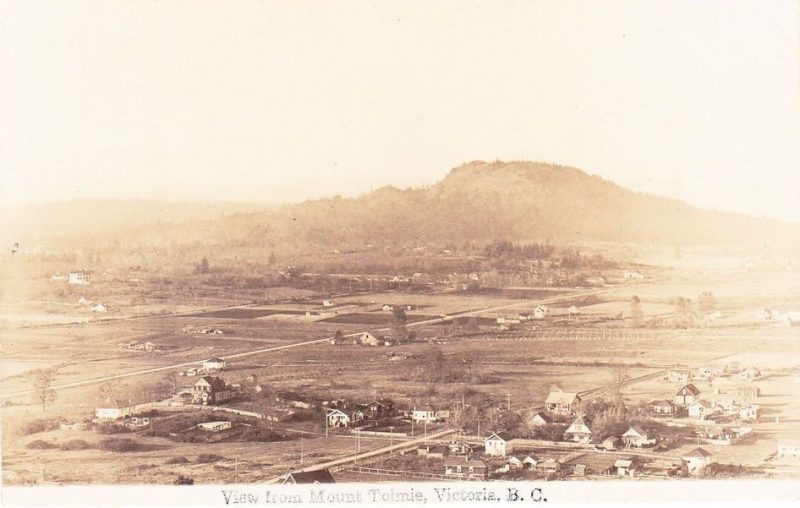
The view from Mt. Tolmie to Mt. Douglas (Cedar Hill), circa 1910, across the Shelbourne valley that became prime skylark habitat
By 1914, most rural communities in B.C. contained an immigrant “bush gentry” of educated settlers broadly of British origin.[15] A single English immigrant can be given as an example, George Drabble (1833-1901), who held numerous posts and occupations in the Comox Valley after 1862, including (at various times) Justice of the Peace, magistrate, post master, collector of votes, returning officer, poll clerk, surveyor, land agent, bailiff, civil engineer, superintendent of public works, assistant commissioner of lands and works, and auctioneer.[16] Slightly later, English immigrant Frederick Tibbs, secretary of the Clayoquot Conservative Association, clear-cut his small island near Tofino and built a wooden castle on it. “My proposition,” he told his niece in England in 1919, “is turning a wild, rugged bit of forest into a little patch of England.”[17] Arrivals from other parts of Canada also held powerful imperial ideals, and the English Canadian elite adopted British Imperialism as a form of nationalism – as something to set them apart from the republican ideals of the U.S.[18]
*
The sporadic introductions of songbirds of the late 19th century were followed by the government-sanctioned importation of English songbirds in 1903 and 1913 by the Natural History Society (NHS) of British Columbia, founded in 1890 to collect ethnographic and scientific specimens for the new Provincial Museum of British Columbia.[19] NHS members collected and described specimens of geological, botanical, archaeological, ethnographic, and historical interest, and wrote about them in a special publication series. [20] In the absence of a provincial university, the NHS formed a powerful political and cultural force in its own right. With the Provincial Museum, it was the intellectual centre of British Columbia until the founding of Victoria College (now the University of Victoria) in 1903 and of a college in Vancouver in 1906 (McGill British Columbia, now UBC).
The NHS drew on a talented group of doctors, jurists, clergymen, teachers, managers, active and retired officers of the Royal Navy and HBC, and government officials who occupied, or had occupied, some of the most privileged positions in the new society. Among the prominent members of the society were the ethnographer, geologist, and botanist Dr. C.F. Newcombe (whose collections formed the basis of many divisional collections at the RBCM), librarian R.E. Gosnell, historian John Walbran, judge Archer Martin, former HBC men J.W. McKay and James Deans, and surveyor Ashdown Green. Practically anyone with a scholarly interest in British Columbia addressed the NHS; guest speakers in the late nineteenth century included historians Adrien-Gabriel Morice and August Brabant, and ethnographer Franz Boas.
The NHS offered economic and cultural reasons for its songbird scheme. In their public statements, NHS members – many of whom owned farms and other rural land — made much of the damage done to crops by insect pests. Songbirds were “useful” because they were insectivorous: they ate insects that damaged farmers’ and orchardists’ crops in the newly cleared and cultivated rural landscapes of the south Island.
The first introduction was mooted in 1897 by NHS member Dr. Crompton, supported by James Deans, a Scottish immigrant and sheep farmer, who argued that “The scourge of cutworms now prevailing throughout the province was to a certain extent due to the lack of bird life.”[21] The scheme was “favourably received” by the mayors of Victoria and Vancouver.
Useful birds were required to promote the fruit industry. The many remaining “heritage” apple orchards on southern Vancouver Island and the Gulf Islands date from before the Okanagan Valley emerged as B.C.’s major orchard district in the first decade of the 20th century. The NHS used the threat of insect pests in Island orchards as a rationale for songbird imports; indeed this first introduction was partly the work of what might be called the fruit lobby.
Over the next two years they met with a committee of the Central Farmers’ Institute of B.C., consisting of T.C. Oldershaw of Sooke and English-born farmer Gaylord Hadwen of Cowichan. They argued that English birds would be of great “value to farmer and gardener in their conflict with insect pests,” but they concluded that starlings and blackbirds were “bold depredators” and struck them off the list, replacing them with siskins, bluetits, and nightingales. They may have listened to a correspondent (unnamed) in New Zealand who, having heard of the proposed introduction, reported that blackbirds, green linnets, and “one of the finches” had been “very injurious” in that country.
In 1901, NHS member and deputy minister of Agriculture, James Anderson, and his boss John Turner, the English-born Minister of Agriculture and former premier, convinced the legislature to vote $500 to the project if the NHS raised a matching amount. The Fruit Growers’ Association of B.C. endorsed the project and gave it their “hearty sympathy” but, like the farmers’ institutes, objected to the introduction of the blackbird, starling, and linnet as “fruit pests.” Provincial Fruit Inspector Richard Palmer, a Native of Norfolk, endorsed the project, and the mayor of Victoria, Essex-born Charles Hayward, lent his support. Palmer and Hayward were orchardists in the Okanagan and Saanich respectively. Donations arrived from “the Residents of Salt Spring Island” and “the people of Cowichan,” assembled at the Farmers’ Institute at Somenos.[22]
With government support and local finance in place, in 1902 the NHS printed 500 copies of a “fly sheet” which doubled as a press release and request for funds, entitled “Proposed Introduction of Useful Birds.” The final list consisted of skylarks, goldfinches, robins, siskins, nightingales, and bluetits. “Due care has been taken in the selection,” the songbirds committee announced, “to see that no destructive species are introduced, but only those known to be of service to the agriculturalist and horticulturalist, and famous for their song.” They estimated that it would cost $1,000 to carry the project through successfully. They urged the public to subscribe liberally. They planned to release the birds at “suitable points” on the island and mainland. They hoped to retain a number of the birds in breeding aviaries “to enable them to liberate and distribute birds each year to different parts of the Province.” This was to be an orderly and systematic introduction, in which successive waves of robust English songbirds would be launched from central breeding aviaries at Victoria.
In 1903, a Mr. Huddlestone of New Zealand[23] wrote to the NHS to warn that skylarks and goldfinches had proved to be “an expensive curse” in that country, but Anderson brushed off any doubts. “Owing to conditions which existed in British Columbia being very similar to those in Great Britain itself, the injurious effects experienced in New Zealand were not anticipated here.” “It was not song birds but useful birds that were proposed to be imported into British Columbia,” he added.
As it happened, only three of the six shortlisted species were imported, due to problems of supply. In June 1903 the NHS bought 100 pairs of goldfinches, 100 pairs of skylarks, and 50 pairs of robins from an English aviary, for a total of 500 birds.[24] The experiment was noted with interest by Country Life, the English rural and county magazine, in November 1903:
An attempt on a large scale to introduce English songbirds into British Columbia is at present being made…. In accordance with the arrangements which have been made, half of the consignment will be placed in Vancouver and taken care of there until next spring when they will be distributed throughout the woodlands of the lower mainland. The remainder will be placed in Beacon Hill Park aviary and kept until spring, when they will be given their liberty at various points on Vancouver Island. It will be very interesting to hear if this extensive scheme of acclimatization proves a success. The clime of Vancouver [Island] ought to suit the British birds well.[25]
The shipment was a near-disaster. Unable to find suitable British or Canadian dealers and transporters, the NHS hired Louis Ruhe of New York as the importer and a Mr. Fluger [C.F. Pfluger] of Portland as freight agent,[26] which meant that the birds made a lengthy trip across the United States before being sent north from Portland to Victoria. The survivors were “examined” in New York, at the request of the NHS, by the noted zoologist and conservationist, W.T. Hornaday. Only a few dozen skylarks and sixteen of the goldfinches made it over the Atlantic, but none of the robins survived the ocean and rail voyage.
Spring would have been the ideal time for the birds’ arrival but the survivors reached Victoria in December 1903 at a poor juncture for feed and acclimatization. The NHS later admitted that they had made a mistake in importing the birds in midwinter, “at a season when conditions out here were not suitable.” After being kept a week or two in the Beacon Hill Park aviary, the birds were released, the goldfinches “in the fields next to the Jubilee Hospital,” and the skylarks in small batches at Beacon Hill Park, Mount Douglas (Cedar Hill), North Saanich, Colwood, and Duncan, all established agricultural districts that offered ideal skylark feeding and nesting habitat.
The last goldfinch was sighted at the Jubilee Hospital in 1908, but the skylarks “took” in the Victoria area. In April 1906, the NHS reported that the skylarks “may be regarded as having become acclimatized and established here.” Predictably, local poets took up their pens to celebrate the birds’ safe transplantation. In April 1905 the Colonist published “To a Lark,” which begins, “I was down-hearted, bird, but now I will/ Take up my load again with lighter heart/ For thou hast taught me that the heart may sing,”[27] and in June 1907, “Ode to the Skylark,” which reads in part:
Old Friend in a new land
Pour forth your thrilling lay.
Sing on with glad heart
Making the world so gay.[28]
Between their arrival in 1903 and 1911, skylarks were recorded in many parts of Victoria and Saanich, including the Deans farm and the Rowlands farm, and as far away as Texada Island, on the Strait of Georgia between Powell River and Qualicum. Twenty skylarks were counted in October 1905 in the Cowichan Valley, and in 1911, eight in the fields near the Jubilee Hospital.
Skylarks were a fortunate choice. They filled a vacant and suitable ecological niche. The basic mildness of the climate was an important backdrop. As James Anderson told the NHS in 1911, “The climatic conditions approximate on Vancouver Island to those of the southern counties of England.” Southern Vancouver Island is in the Coastal Douglas-fir biogeoclimatic zone, characterized by moderate temperature, minimal rainfall, and a Mediterranean-like climate. By contrast, the lower mainland is within the Coastal Western Hemlock biogeoclimatic zone, known for a heavy rainfall, colder climate, and absence of the temperate climate arbutus and Garry Oak found on the islands to the west.[29] Only in the Coastal Douglas-fir biogeoclimatic zone did the climate resemble southern England, and only there did the birds take.
Culturally, skylarks were a favoured species, as W.H. Hudson noted in British Birds (1906):
The skylark is so universally diffused in these islands, and so abundant and favourite a species, that anything beyond a brief and prosaic summary of its habits would appear superfluous. His image, better than any pen can portray it, already exists in every mind. A distinguished ornithologist, writing of the sparrow, declines to describe its language, and asks his reader to open his window and hear it for himself. In like manner, I may ask my reader to listen to the lark’s song, which exists registered in his own brain. For he must have heard it times without number, this being a music which, like the rain and sunshine, falls on all of us.[30]
Hudson went on to describe a skylark’s song:
A more inexhaustible singer than the lark does not exist; and when we consider how abundant and widely diffused the bird is, the number of months during which he is vocal, and the character of the song – a rapid torrent of continuous sound – it is almost possible to believe that the melody from this one species actually equals in amount that from all the other song-birds together.[31]
The Island provided ideal habitat. The climate was temperate and the colonial agricultural landscape had recreated something resembling the field, settlement, and crop patterns of older farming societies. Island farms were surveyed around and between such obstacles as hills, rocky outcrops, lakes, creeks, and inlets. [32] In Victoria, Saanich, and Cowichan, roads meandered gently and seemingly haphazardly through park-like settings some of which had once been Indigenous Camas meadows.[33] A uniform and predictable grid system, employed by the Royal Engineers on the mainland, was never applied to the Island. In the Comox Valley, the settlers of 1862 were each given access to the Tsolum River for boat or canoe transport, resulting in a strip-like or “long lot” pattern similar to settlement along the St Lawrence River or along the Red and Assiniboine Rivers, a pragmatic survey pattern determined by the course of the river itself, not by the cardinal points of the compass.[34] A colonial landscape had been created, a by-product of which was a suitable bird habitat, but the right birds were absent. The rural landscape came before the birds.
By 1910, after six decades of agricultural settlement, conditions existed for a ground-nesting bird. Hudson described the bird’s Indigenous (English) habitat:
The skylark inhabits open places, and is to be met with on pastures, commons, downs, and mountain slopes; but he prefers arable land, and is most abundant in cultivated districts…. The nest, made in April, is a slight hollow in the ground in a cornfield, or among the grass of a meadow, or any open place, and is composed of dry grass and moss, lined with fine grass and horsehair.[35]
Skylarks, Hudson noted, feed on grains, seeds, cereal crops, and insects. They forage on the ground, typically in stubble, their ideal habitat. They prefer grasslands for nesting; they will nest in open hay fields or ploughed fields. “Skylarks nest in open, unobstructed habitats that are well covered with short grasses and low herbs,” notes R.W. Campbell of the Royal B.C. Museum. “They may occupy the same area for many years. Adults feed mainly on weed seeds and grain, while nestlings are raised initially on a diet of mostly beetles.”[36]
They were thus suited to the agricultural clearings and farms of southern Vancouver Island, which, since the 1850s, settlers had fashioned complete with fencing, ditching, seasonal crop rotation, and natural hedgerows that grew up on property boundaries. A typical preemption or rural holding on Vancouver Island in 1900 consisted of a clearing of five or seven acres within much larger forested properties. In this pre-automobile era, settlers grew hay for horses (“hayburners”) and for cattle and oxen, a regime of land-clearing and cultivation that, in turn, produced the grassland habitat favoured by skylarks.[37] In short, a receptive European-style agricultural habitat had been created on Vancouver Island, usually from what had been forest. British settlers had created a niche and now they wanted to fill it. They had created a familiar landscape — but without the familiar birds.
*
Emily Carr, born of English parents in 1871 in Victoria and brought up there, found her cultural baggage a mixed blessing. A proud Canadian, she also acknowledged the influence of her Imperial and Victorian upbringing.[38] “I was not English,” Carr recalled of her arrival at the San Francisco School of Art in 1886, “but I was nearer English than any of the others. I had English ways, English speech, from my English parents though I was born and bred Canadian.”[39] Later she spent almost six years in England (1899-1905), the first four at the Westminster School of Art and the last year and a half recovering from a breakdown at a sanatorium in East Anglia. Her years in London overlapped with the 1903 NHS introduction, with which she was familiar; and while at the sanatorium in 1904, she devised a solitary plan to breed songbirds for introduction to British Columbia.[40]
In her memoir, Growing Pains (1946), Carr recalled songbirds as a vital part of the rural English landscape, but she also found that landscape itself tame and cultivated after Vancouver Island. At the same time, she developed such a strong personal and cultural affinity to English songbirds that she proposed to introduce them to Vancouver Island.
While a student in London, oppressed by its urban and industrial sprawl, Carr sketched in the countryside as often as possible and appreciated the birds she saw there. Deep in the countryside at Goudhurst, Kent, she put these words in the mouths of cuckoos: “`Oh, all you great English cities! Why did you do this to England? Why did you spoil this sublime song-filled land with money-grubbing and grime?’” She continued: “I saw a wood just beyond the graves…. Thrushes, blackbirds, every kind of songbird was shouting welcome. From the centre of the graveyard two larks rose up, up — wings and song tinkling. The notes scattered down to earth clear as rain drops” (Growing Pains, p. 137). She also painted at Bushey, Hertfordshire:
The land around Bushey dipped and rose pastorally and was dotted with sheep, cows and spreads of bluebells. Everything was yellow-green and pearly with young spring. Larks hurried up to Heaven as if late for their choir practice. The woods in the hollows cuckooed all day with cuckoos; the air melted ecstatically into the liquid of nightingale music all night (Growing Pains, p. 176).
All this fed her art. Carr had tired of English art for its fixation with conventional rural themes and composition. “Browsing cows, hooves well sunk in grass … placid streams with an artistic wiggle meandering through pastoral landscape — that was the Old World idea of a picture,” she recalled. She described her first sketching trip to one such landscape, at Boxford in Berkshire. “It was the first time I had sketched out-doors in England. Even across one field there was soft hazy distance, distance gradations were easier here to get than in our clear Canadian atmosphere and great spaces; everything was faded, gentle here. Colour did not throb so violently. English landscape painting was indolent seeing, ready-made compositions, needing only to be copied.” Conversely, according to Carr, English artists found the west coast “crude, unpaintable.” “Its bigness angered, its vastness and wild spaces terrified” (Growing Pains, pp. 76, 157).
She took her friend “Martyn” (William Locke Paddon, a suitor from Victoria), into Epping Forest, northeast of London:
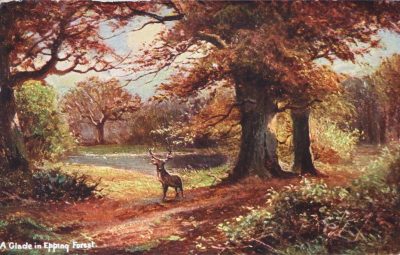 Here were trees venerable, huge and grand but tamed. All England’s things were tame, self-satisfied, smug and meek — even the deer that came right up to us in the forest, smelled our clothes. There was no turmoil of undergrowth swirling round the boles of the trees. The forest was almost like a garden — no brambles, no thorns, nothing to stumble over, no rotten stumps, no fallen branches, all mellow to look at, melodious to hear, every kind of bird, all singing, no awed hush, no vast echoes, just beautiful, smiling woods not solemn, solemn, solemn like our forests. This exquisite, enchanting gentleness was perfect for one day, but not for always — we were Canadians.
Here were trees venerable, huge and grand but tamed. All England’s things were tame, self-satisfied, smug and meek — even the deer that came right up to us in the forest, smelled our clothes. There was no turmoil of undergrowth swirling round the boles of the trees. The forest was almost like a garden — no brambles, no thorns, nothing to stumble over, no rotten stumps, no fallen branches, all mellow to look at, melodious to hear, every kind of bird, all singing, no awed hush, no vast echoes, just beautiful, smiling woods not solemn, solemn, solemn like our forests. This exquisite, enchanting gentleness was perfect for one day, but not for always — we were Canadians.
She concluded that there was a “gnaw in us for wild, untrimmed places. This entranced, the other satisfied; this was bounded, the other free” (Growing Pains, pp. 142-3).
Carr also encountered songbirds in city aviaries. She enjoyed visiting the Seven Dials, “London’s bird-shop district, entering the dark stuffiness of the little shops to chirp with bird prisoners, their throats, glory-filled and unquenchable, swelled with song even in these foul captive dens,” she recalled. Carr also visited William Cross’s Menagerie and Museum on the docks on Earle Street, Liverpool, “world-wide animal distributors” (Growing Pains, pp. 154, 215). Cross, a naturalist and importer of wild animals for the zoological gardens and other collections of the United Kingdom, had agents in all parts of the world.[41]
*
In 1903-4 Carr had what she described as an “overwork breakdown” (“I was only a student who had overworked”), and her doctor recommended that she recover at a private sanatorium on the seaside in East Anglia. “There will be trees and air, I thought, and was glad.” As always, she took pleasure and solace in the birdlife. “What birds meant to the East Anglia San only those who have lain helpless among the slow-dying know,” she recalled. “The larks, hoisting their rippling songs to Heaven, sinking with fluttering pause back into an open field! … Birds of East Anglia! You almost compensated for torn lungs and overwork breakdowns” (Growing Pains, pp. 87, 88, 183).
The “San” forbade Carr to paint. Early in 1904, after a year of indifferent response to the treatment, she had this conversation with her doctor:
“England beats Canada in just one thing,” I said.
“What’s that?”
“Song-birds.”
“Why don’t they import some?”
“They did, but in such a foolish way they all died — poor trapped, adult birds, terrified to death.”
“Could it be successfully done?”
“I know how I’d go about it. First, I would hand-rear nestlings, take them to Canada, keep them in semi-captivity in a large, outdoor aviary. I would never liberate those old birds, but let them breed till there was a strong band of young ones to free.”
“Sounds reasonable, go ahead,” said the doctor.
“You mean I could raise my little birds here?”
“Why not, open air, birds in plenty!” (Growing Pains, p. 185).
“My life began again,” Carr wrote of the doctor’s endorsement of her songbirds proposal — which was not unlike the NHS scheme of the previous year. Her object, she wrote, was to raise “nestlings to take back to Canada where they have few songsters.” She bought books on how to hand-raise English birds. She robbed nests, baby birds and all, of thrushes, blackbirds, and bullfinches. She kept them on a table by her bedside and fed them every two hours between dawn and dusk with a tiny pair of wooden pincers. She gave them grubs, worms, and ants provided by the other patients from the sanatorium grounds. Later, to the delight of the other patients, she filled her room with birdcages (Growing Pains, pp. 185-90).
But when they were about nine months old her birds “began to get very quarrelsome.” Carr herself had been in the sanatorium for sixteen months, longer than any other patient. “I was losing, not gaining.” Doctors then decided on a two-month course of treatment consisting of electric shocks, heavy feeding, and heavy massage. There would be no one to look after the birds properly during her treatment; her old friends had recovered and left the sanatorium. She decided not to free the tame birds because village boys would simply trap them. She put the birds in a box, took them to the doctor, and said “Chloroform my birds” (Growing Pains, pp. 190-1).
Carr survived her “dreadful treatment” and spent altogether eighteen months in the Sanatorium. She left England late in 1904 for British Columbia. “Good-bye to my high hopes for work, to my beautiful birds, to my youngness!” (Growing Pains, p. 193). She brought only a single pair of bullfinches with her to Victoria in 1905. “They did not populate the forests of British Columbia,” her biographer Paula Blanchard notes, “but they lived in her studio for a while.”[42]
Emily Carr and her menagerie (Prince Pumpkin, Lady Loo, Young Jimmy, Adolphus the Cat, Kitten, Chipmunk, and Parrot), in her garden at Simcoe Street, Victoria, 1918. Virtual Museum of Canada
*
The NHS, steeled and encouraged by the relative success of the 1903 introduction, embarked on a second importation seven years later.[43] On this occasion, the society put cultural or aesthetic reasons on par with economic ones. A new committee was struck in 1910. It consisted of Arthur Barton, a partner in the Victoria real estate firm of Pemberton & Son, and Edward Robinson, a Victoria jeweller and bee-keeping advisor to the provincial government. Both men had come to Canada in their early twenties, Barton from Hertfordshire and Robinson from London. Their stated object was “To introduce new varieties of song birds, as well as others that are unquestionably of benefit to gardeners.” Only birds with “a good reputation with the English farmers” would be selected.
Old Harrovian Dr. Hasell spoke to the society on “Some Notes on the British Birds to be Imported.” His slides, the NHS minutes reported, “were beautifully coloured and depicted the birds in a most graphic manner.” Hasell urged the committee to consider the robin, a bird that he thought “appealed to all from the Dear Homeland.”
Suddenly, in December 1911 Bryan Williams, Ango-Irishman, Cambridge University graduate, fisherman, big game hunter, and Provincial Game Warden, announced that the birds “would not be allowed admission.” Williams warned that the songbirds, unless carefully selected, might become destroyers of fruit crops. He warned of the sinister effects of bird introductions: elsewhere songbirds had, like Jekyll and Hyde, acquired in the colonies a new personality quite unknown in the homeland. The NHS noted his objections as follows:
Mr. Williams takes the view that the introduction of birds to an alien climate may lead them to changing their habits, and instead of being merely ornamental additions to the forests, they may be destructive of the fruit crops. In making this announcement, he states that insect eating birds have turned carnivorous in their habits under new conditions in other parts of the world.
Williams also reminded the NHS that “the Game Act gives him full power to regulate the introduction of any animals or birds,” and that his main concern was protecting the province’s “small fruits” from potential bird pests.[44]
By July 1912 the problems had been solved. Williams and the Attorney-General approved of the purchase of English birds and “setting them at liberty” in British Columbia. They agreed on the benign or beneficial qualities of goldfinches, brown linnets, bluetits, robins, and skylarks. Williams even ordered fifty pairs of skylarks for the Game Department to introduce in the lower Fraser Valley.
As well, Vancouver businessman W.H. Malkin, a large-scale grocer and native of Staffordshire, sponsored a portion of the bird import for his country estate five miles from Vancouver and expressed his desire to join the NHS.
In the fall of 1912 Shackleton’s of Leadenhall Market (“a firm of fanciers”) captured the birds. All came from Surrey except the goldfinches, which came from Worcestershire. The shipment was arranged by John Turner, ex-premier and now British Columbia’s Agent-General in London. Approval was sought and received from the head office of the Society for the Prevention of Cruelty to Animals and from the British Wild Birds’ Protection Society, and this time, unlike in 1903, the birds were shipped on the all-British route of the CPR under the charge of a “special attendant,” a young man named Miller.
Altogether 436 birds (148 skylarks and seventy-two of each of the other species) left England on the CPR’s Montcalm for Quebec on 5 March 1913. “Soon the lawns and gardens of the Island may be enriched by the presence of the English robin,” editorialized a Victoria newspaper. They were boxed together in specially constructed cages except for the robins which, “owing to their reputation for pugnacity,” got their own cages. They were provided with all sorts of fruit, sand, and grit for the journey. Unlike the birds of the 1903 introduction, these were sent as quickly as possible across Canada, “thereby shortening the time of travel” to their new homes. They reached Victoria on April 7, 1913.
Despite all precautions, about one third of the birds had died on the voyage: 150 on the Montcalm and another fifty on the train. The birds had been given “poor lodgings” in the forecastle of the steamer, and keeping them alive had increased costs from $1 a bird to a projected $3.50. In Vancouver, Williams and Malkin accepted 44 of the surviving skylarks. The remainder went on to Victoria, where their arrival caused considerable excitement. They were housed for two days at Flewin’s Nurseries where “crowds of citizens” donated close to $300 toward expenses. The NHS congratulated itself on introducing “some of the most beautiful song birds in the world.” After two days at Flewin’s, the birds were introduced into the wild at secret locations. Soon after, the press reported that some of the skylarks had been seen at Cadboro Bay and that they were nest-building. In 1936, G.D. Sprot revealed that 49 skylarks were released in the Victoria area: 34 at Rithet’s Farm, nine at Landsdowne Road, and six at Cadboro Bay.[45]

Cadboro Bay, where songbirds were released in 1903. From here the fields ran up to Gordon Head, where the University of Victoria opened its campus in 1967
News of the importation, carried in central Canadian newspapers, caused a new controversy. The federal government, which had never heard of the project, responded indignantly to this songbird scheme in the hinterland. The Humane Education Committee complained of the bird deaths en route and the Committee of Conservation of Forests and Wildlife complained of the potential harm posed to Indigenous species. They asked why Ottawa hadn’t been informed and questioned the wisdom of the venture. They were upset that the experiment had been conducted by the NHS and various branches of the British and B.C. governments without their consultation. The NHS had ignored central Canadian governments and animal welfare institutions. B.C.’s Agent-General, not the Canadian High Commissioner, had coordinated the project in London. In their desire to bypass federal authorities and national organizations, the NHS made it clear that Victoria’s direct connections with London were still in place. Mere political union with Canada was not going to interfere with the direct link between the former colony and the centre of empire.[46]
These episodes show the NHS and provincial government voting money and promoting the arrival of English songbirds a matter of months before the arrival, in May 1914, in Vancouver Harbour of 400 Sikhs on the Komagata Maru. But while the birds were welcomed and given the run of the south coast of B.C., a ship full of British subjects was turned away and forced to return to India by the same Conservative government that facilitated the songbird importation.[47]
*
The fate of the 1913 songbird introduction was mixed. The linnets, bluetits, and robins were last seen in 1914. The goldfinches took to the new land and established a small resident population which, after occasional sightings, disappeared in the 1930s; goldfinches have not been seen since. Williams’ and Malkin’s mainland skylarks also disappeared soon after their arrival. The NHS attributed the demise of the Victorian releases to the predatory activities of crows, house cats, and boys. In 1914, crows were singled out as the villains, and the society urged the government to allow crows to be shot in urban and rural areas so that the songbirds, “which have managed to survive the first year of life out here, may have every chance to increase and multiply in their new home.”
As with the first introduction, the poets of Victoria took to their pens and newspapers. In March 1914, the Colonist published two poems on crows’ predation of songbirds. The first, by Colonel M.A. Kent, went in part:
The stately homes of Oak Bay
How silently they stand,
For the crows have killed or hunted
Every song-bird from the land.[48]
The second, “The Early Crocus” — employing the rhyme between “crocus” and “broke us” to good effect — begins:
We purchased larks
For groves and parks,
And if you’ll pardon slang remarks,
The outlay nearly “broke” us.[49]
The Eurasian skylarks of 1913 survived and augmented the 1903 introduction.[50] Of all the introduced bird species, only they found a niche on the Island. England, Carr believed, could beat Canada only in its songbirds, and she and many contemporaries wanted familiar English birds as company in their new world exile. “The skylark found Victoria like his English home, and has become one of us,” wrote J.K. Unsworth in The Public School Magazine (Victoria) in 1929.[51]

Map from G.D. Sprot, “Notes on the Introduced Skylark in the Victoria District of Vancouver Island” (1937)
In the fall of 1935, naturalist G.D. Sprot of Cobble Hill undertook a survey and census of the skylarks in Victoria District, which represented about a third of the bird’s range on Vancouver Island. He found 195 skylarks in nine groups inhabiting the agricultural districts on Victoria’s eastern and northern edges, from Cadboro Bay to Christmas Hill. The average number of skylarks per acre, Sprot calculated, was two or three. Typically, skylark groups lived in what Sprot called “the whole of a small valley and the slopes thereof.”
The birds, Sprot discovered, avoided newly-ploughed fields in favour of stubble fields left when farmers cut their crops. Skylarks preferred the light stubbles from wheat or oats, “such as result from the dairyman’s method of cutting early for the silo or for feeding stock in summer.” Their least popular winter habitat was “course stubbles on rich soil that has been cleanly farmed; for the most part seeded to clover, the grain having served as a cover crop.”
In winter, the skylark groups were stationary, their major habitat being grain stubble; but when it was not available, the birds remained attached to their own area, adapting themselves to the demise of dairy farming by living, for example, in the weedy arable soil of a Chinese market garden, or in fields of newly-sewn sprouting or germinating wheat, where they ate wheat seeds. In cold winters, the birds occasionally sought food in vacant lots or back yards as long as they were not too enclosed.
Sprot noticed the “natural scarcity of native species over cultivated land” on Vancouver Island:
It would be unwise to attempt to state, at this time, which factor or combination of factors accounts for the Skylarks’ continued presence. The extreme scarcity, both now and formerly, of native species of birds in the area now frequented by Skylarks has suggested the possibility of there having been, about 1903, a vacant ecological niche brought about by the clearing of the forests. This niche, connected with cultivation, obviously was not, and has not as yet been, fully taken advantage of in winter. Nor has it to any appreciable extent been occupied in summer by native species.
Sprot concluded optimistically that:
The climatic conditions in the vicinity of South Vancouver Island, and especially at Victoria and on Saanich Peninsula, may therefore be considered favourable, and if the present methods of farming be continued, there seems to be no reason why the Skylarks should not continue to hold their own, or even, as the timber becomes cleared to the west, extend their range.[52]
*
Sprot was overconfident, but it would be three decades before the favoured stubble field habitat of Victoria and Saanich surrendered to suburban development. At their peak, between the 1930s and 1950s, skylarks were “established on suitable grasslands,” wrote Clifford Carl and Charles Guiguet, in the rural parts of Victoria, Saanich, and James Island.[53] Settlers continued to appreciate the birds, but not so much for their economic or insectivorous value as their cultural and literary resonance. “Skylarks,” recalled historian John Bosher (born 1929), whose father ran the Dominion Experimental Farm near Sidney, “were one of the features of life in North Saanich that cheered many local residents, including my parents, who were perennially homesick for rural England.”[54]
The mid-20th century saw the completion of a project of recreating a familiar British agrarian and rural landscape on southern Vancouver Island, followed by the start of a steady decline in skylark range and numbers. In 1962, Biologists David Stirling and Yorke Edwards estimated the total population at about 1,000, a figure that is now seen as the zenith of skylark success on Vancouver Island. In February 1969, Stirling and Ray Beckett counted 777 birds, all but twenty of which were in Central Saanich and North Saanich.[55]
The University of Victoria, circa 1973. The large light yellow field at left is the Skylark Field, to which skylarks never returned. In the distance is San Juan Island where skylarks were first noticed in 1960. Vintage Victoria photo.
At the University of Victoria, which moved in 1967 to a campus built on skylark fields on the HBC’s old Uplands Farm above Cadboro Bay, the resilient skylarks continued to nest for about a decade in a field between the Sedgewick and Cornett buildings. Students created a diagonal footpath across the field between the two buildings. In the early 1980s, after the birds had not been seen for several years, the grounds crews started mowing the field, and in the following decade, the university built its school of business there. Professor of Geography J. Douglas Porteous — born in England in 1943 and an Oxford graduate — wrote to the faculty newspaper in 1995:

And no birds sang. The Skylark Field on a remnant of 19th century farmland at the University of Victoria, circa 1975
THE EDITOR. So the skylarks were driven from the Skylark Field to make way for a Business Building! Skylarks are beautiful and, in Canada, very rare. Their song is the stuff of poetry; it raises our spirits and speaks to our hearts. Business has none of these qualities. The replacement of skylarks by business is sadly symbolic of all that is going wrong with this university.[56]
Numbers continued to decline. By 1986, numbers had been “greatly reduced,” ornithologist Earl Godfrey wrote, “by a combination of severe winter weather and loss of habitat due to human housing.”[57] Urban sprawl, loss of farmland and field habitat to urban and suburban development, and changing agricultural practices and increased mowing on breeding grounds — fields previously cut once or twice a year for hay are now cut more often — have disrupted and limited nesting patterns and steadily reduced skylark range. Predation by the Northwestern crow and European starling are also factors.[58]
A small population of skylarks exists today in three rural corners of the Saanich Peninsula: the fields surrounding the roads and runways of Victoria International Airport; Martindale Valley, south of Island View Road; and Vantreight Bulb Farm in Central Saanich. They have been pushed right out of their previous Victoria range, as shown on Sprot’s map of 1936. A total of 35 breeding pairs were counted in 1998 and a total population of between 100 and 200 skylarks nested in Saanich in the summer of 2007. The main threat is the steady destruction of agricultural habitat in North Saanich, though Victoria Airport Authority, in conjunction with the Victoria Natural History Society, has taken measures to protect their nesting habitat, including infrequent grass cutting and protective fencing.
In 2007, Slagboom concluded on a pessimistic note:
Within their isolated agricultural pockets, the skylarks are very local. In a severe winter year, any one of the remaining groups could be wiped out by disease, starvation or a myriad of perils. Currently, there is little being done to save this species. A lack of local interest in conservation of the introduced skylark, no matter how many bird-tourist dollars it brings in to the city, has made it difficult to save.[59]
Vancouver Island’s Edwardian-era skylark colony is now in dire straits. “This is not a rare bird but a bird in severe decline,” noted “Birdergirl” in the community forum website “Birding in British Columbia,” in January 2018.[60] And in a June 2018 post, birder and photographer Jody Wells lamented the “drastic decline” of recent years. “Recent estimates put population at between 20 and 65 individuals.”[61]
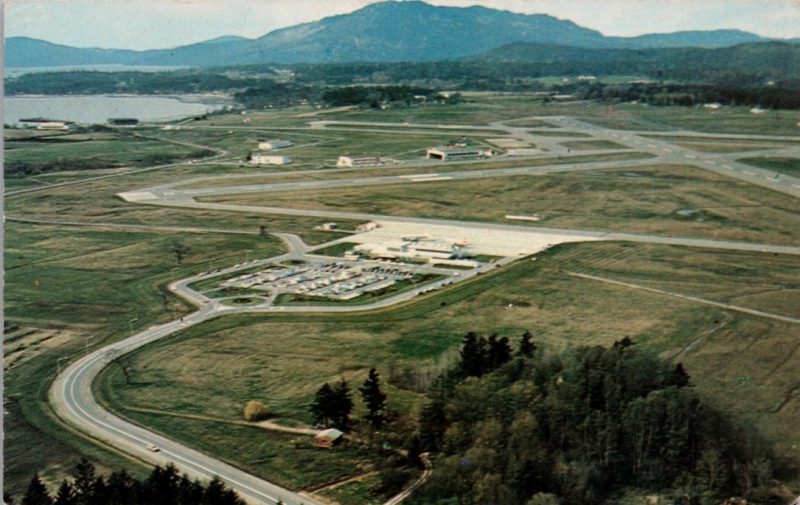
Victoria Airport looking north to Mt. Tuam on Salt Spring Island, circa 1970. Skylarks still nest in the fields in the foreground
*
Paradoxically for a bird that is so evocative of rural England and that was introduced by English immigrants, some of the Victoria skylarks crossed the eight miles (13 km) of Haro Strait and entered the United States. Skylarks were not the first migrants from Europe to use Canada as a stepping-stone to the U.S. The first skylark was reported on San Juan Island in 1960, and in 1970 the first nest was found;[62] but by 2000, the San Juan skylark population had been eradicated by foxes, which had been introduced on the island to control the immense numbers of introduced European rabbits which, unchecked, had become a major agricultural pest. Therefore, for a brief time this pastoral American island possessed a small breeding population of this iconic English bird.[63]

A skylark in Vantreight Farm’s bulb fields, June 2018, with “a face full of food,” according to photographer Jody Wells
The handful of remaining Vancouver Island skylarks have now made it into the bird books. Birders come from all over North America to see this relict skylark population. Birders from England even make pilgrimages to this tiny colony of stranded English skylarks. “The Saanich Peninsula is like a small piece of England transplanted to America [sic],” wrote Ralph Whitlock, a Guardian Weekly columnist in 1995. “If present trends continue,” he said, referring to the ninety percent decline in British skylark population due to changed agricultural techniques, “the day is not so very far distant when we shall have to go to Canada to hear the skylark. How scarce it is becoming!”[64]
It is no accident that the skylarks thrived for a time on southern Vancouver Island. They could not have survived anywhere else in British Columbia. “The single success of the Vancouver [Island] introductions,” notes Paul Donald in The Skylark, “might be due to the fact that temperatures and rainfall on Vancouver Island are more suited to that of the native range of the subspecies that was imported.”[65] Similarly, historian Thomas Dunlap writes that, “North of the forty-ninth parallel the climate barred most introductions. Only Vancouver Island and southern British Columbia were temperate enough to encourage importations (and here the skylark found one of its few non-European homes).”[66]
But a favourable climate was only the beginning of the bird’s success. Long before their arrival, farming practices had created familiar and suitable habitat. The skylark’s success on southern Vancouver Island was rooted in the Island’s agricultural and settlement history and in the efforts of British settlers to import this familiar songbird, this “old Friend in a new land,” to complete their colonial project on Canada’s west coast.
*
Endnotes:
[1] This essay originated in research I did in 1984 for the centennial history project of the British Columbia Provincial Museum. I am indebted to Yorke Edwards and Dan Gallacher for hiring me that summer. In 1988 I presented a version of this songbird story at the Qualicum Conference. I did so again at the Environmental Cultures Conference at the University of Victoria in 1996, and in the Geography Department seminar series at the University of Victoria in 2008. I spoke on this topic to the Malaspina Naturalists in Powell River and to the Galiano Naturalists, both in 2009. After every talk, people offered contacts, leads, and corrections. Many people have kindly given me songbird references, not all of which I have used. I am grateful to Allan Brooks, Betty Brooks, Jenny Clayton, Rosemary Collard, Patrick Dunae, Doug Innes, Lisa Kadonaga, Gary Kaiser, Kerry Mason, George Mackie, Jamie Morton, Janis Ringuette, Allen Seager, David Spalding, Jeanette Taylor, Leona Taylor, Robert Ratcliffe Taylor, Len Todd, and Graeme Wynn.
[2] J. Despard Pemberton, Facts and Figures Relating to Vancouver Island and British Columbia, Showing What to Expect and How to Get There (London: Longman, Green, Longman, and Roberts, 1860), pp. 20-21.
[3] On game bird introductions see British Columbia, Sessional Papers (Victoria: King’s Printer, 1905, a reference I owe to David Spalding) and Carl and Guiguet, Alien Animals, pp. 25-35. Perhaps the earliest was in February 1860, when Henry Newsham Peers of Colquitz Farm turned loose California quails “on his farm for the purpose of stocking the Island with that excellent game.” Victoria Daily Colonist, Februrary 25, 1860. I owe this reference to Leona Taylor.
[4] Daily British Colonist, 8 June 1870.
[5] See Rosemary Neering, Government House: The Ceremonial Home of All British Columbians (Victoria: Sono Nis Press, 2007), p. 49. I owe this reference to Jenny Clayton.
[6] Daily British Colonist, 26 April 1874 and 5 April 1884.
[7] Daily British Colonist, 25 August 1886; 26 August 1886; 28 August 1886; 18 September 1886; 23 March 1888. I owe these references to Leona Taylor
[8] A vast literature exists on songbird and other introductions. For a start, see Andrew Hill Clark, The Invasion of New Zealand by People, Plants, and Animals (Rutgers University Press, 1949); Alfred W. Crosby, Ecological Imperialism: The Biological Expansion of Europe, 900-1900 (Cambridge University Press, 1986); R.M. McDowall, Gamekeepers for the Nation: The Story of New Zealand’s Acclimatisation Societies (Canterbury University Press, 1994); and Thomas R. Dunlap, Nature and the English Diaspora: Environment and History in the United States, Canada, Australia, and New Zealand (Cambridge University Press, 1999).
[9] Troy V. Lee, “`Glistening Patches of Gold’: The Environmental History of Scotch Broom (Cytisus scoparius) on Southern Vancouver Island, 1848-1950,” BC Studies 166 (Summer 2010), pp. 39-54.
[10] G. Clifford Carl and C.J. Guiguet, Alien Animals in British Columbia (Queen’s Printer, 1972); Alex Van Tol, Aliens Among Us: Invasive Animals and Plants in British Columbia (RBCM, 2015).
[11] The population estimates are from Jean Barman, The West Beyond the West: A History of British Columbia (University of Toronto Press, 1991), pp. 363-364 and Jean Barman, Growing Up British in British Columbia: Boys in Private School (UBC Press, 1984), pp. 2, 16. See also John Belshaw, Becoming British Columbia: A Population History (UBC Press, 2009), pp. 145-161; for the “Anglo-boom” of the McBride era see Patricia E. Roy, Boundless Optimism: Richard McBride’s British Columbia (UBC Press, 2012); see also Donald G. Paterson, British Direct Investment in Canada, 1890-1914 (University of Toronto Press, 1976).
[12] Galois and Harris note that a small group of Protestant men, most of whom knew each other, dominated government, courts, churches, and the commercial economy. See Robert Galois and Cole Harris, “Recalibrating Society: The Population Geography of British Columbia in 1881,” Canadian Geographer 38:1 (1994), p. 51. See also J.F. Bosher, Imperial Vancouver Island: Who Was Who, 1850-1950 (Woodstock, UK: Writersworld, 2012); Patrick A. Dunae, Gentleman Emigrants: From the British Public Schools to the Canadian Frontier (Douglas & McIntyre, 1981), esp. pp. 73-93; Anthony A. Barrett and Rhodri Windsor Liscombe, Frances Rattenbury and British Columbia: Architecture and Challenge in the Imperial Age (UBC Press, 1983); Peter Stursberg, Those Were The Days: Victoria in the 1930s [1969] (Horsdal & Schubart, 1993).
[13] For a short summary of Victoria’s Britishness see Barman, Growing up British, pp. 10-13, and popular histories like Terry Reksten, More English than the English: A Very Social History of Victoria (Orca, 1986), and Valerie Green, Above Stairs: Social Life in Upper-Class Victoria (TouchWood, 2011).
[14] Hills is quoted in Belshaw, Becoming British Columbia, p. 14. For the settlers’ “Arcadian ethos,” see Cole Harris and David Demeritt, “Farming and Rural Life,” in Cole Harris, The Resettlement of British Columbia (UBC Press 1997), pp. 219-149.
[15] On the Bush Gentry see Richard Mackie, “Cougars, Colonists, and the Rural Settlement of Vancouver Island,” in R.W. Sandwell, ed., Beyond the City Limits: Rural History in British Columbia (UBC Press, 1999), p. 126.
[16] Richard Mackie, The Wilderness Profound: Victorian Life on the Gulf of Georgia (Sono Nis Press, 1995).
[17] Richard Mackie, “The Short, Happy Life of Fred Tibbs,” The Beaver 71:1 (February-March 1991), pp. 43-50.
[18] See Carl Berger, The Sense of Power: Studies in the Ideas of Canadian Imperialism, 1867-1914 (University of Toronto Press, 1970).
[19] Unless footnoted otherwise, my discussion of the 1903 introduction is drawn from the Natural History Society of British Columbia Papers, Mss. 284, BC Archives. For the 1903 introduction, see also
[20] See Patricia E. Roy, The Collectors: A History of the Royal British Columbia Museum and Archives (Royal British Columbia Museum, 2018).
[21] See also David Dendy, “The Worm in the Apple: Contesting the Codling Moth in British Columbia,” in Sandwell, Beyond the City Limits, pp. 142-156.
[22] Simultaneously, the Colonist reported on a smaller private importation in September 1902. “Chief Engineer McGraw, of steamer Tees, who has been on a three month vacation to England, accompanied by Mrs. McGraw, is back from his old home on the Mersey,” noted the paper. “Mr. McGraw brought with him a large number of English song birds, and will have quite an aviary of the feathered Britishers. He has a number of English larks, linnets and thrushes.” A few months later the paper reported that the NHS was assisting McGraw with his expenses. Daily British Colonist, 30 September 1902, 1 January 1903, a reference I owe to Leona Taylor.
[23] In all probability Fortescue Francis Croft Huddlestone, a New Zealander with Canadian connections.
[24] On the 1903 introduction, see also Carl and Guiguet, Alien Animals, pp. 40-42.
[25] Country Life XIV: 358, 14 November 1903, quoted in Victoria Naturalist 49:6 (1993), p. 5. I owe this reference to Janis Ringuette.
[26] On Pfluger and his songbird imports from Germany, see Robin W. Doughty, The Mockingbird (University of Texas Press, 1988), pp. 25-26.
[27] J.B., “To a Lark,” Colonist 16 April 1905, p. 10. I owe this reference to Robert Taylor.
[28] “Ode to the Skylark,” Colonist, 23 June 1907, quoted in Robert Ratcliffe Taylor, Imperial Eden: Victoria, BC, in Verse, c. 1858-1920 (Trafford Publishing, 2014), p. 40.
[29] Ian McTaggart Cowan and Charles J. Guiguet, The Mammals of British Columbia (British Columbia Provincial Museum, 1956), p. 27.
[30] W.H. Hudson, British Birds (London: Longmans, Green, and Co., 1906), pp. 174-175.
[31] Hudson, British Birds, p. 176.
[32] For the Island’s early rural settlement see Richard Mackie, “The Colonization of Vancouver Island, 1849-1858,” BC Studies 96 (Winter 1992-93), pp. 3-40.
[33] The dispossession of Indigenous people and creation of Indian Reserves facilitated the settlement of colonial immigrants. See R. Cole Harris, Making Native Space: Colonialism, Resistance, and Reserves in British Columbia (UBC Press, 2002).
[34] See Mackie, The Wilderness Profound, pp. 36, 55.
[35] Hudson, British Birds, p. 176.
[36] Campbell, R.W., L.M. Van Damme, and S. R. Johnson (1997). Eurasian Skylark (Alauda arvensis), version 2.0. In The Birds of North America (A.F. Poole and F.B. Gill, Editors). Cornell Lab of Ornithology, Ithaca, NY: https://doi.org/10.2173/bna.286
[37] On preemptions, rural farming, and lot sizes, see Mackie, The Wilderness Profound, pp. 230-267.
[38] The standard works on Carr are Maria Tippett, Emily Carr (Oxford University Press, 1979); Doris Shadbolt, The Art of Emily Carr (Douglas & McIntyre, 1979); Paula Blanchard, The Life of Emily Carr (Douglas & McIntyre, 1987).
[39] Emily Carr, Growing Pains: The Autobiography of Emily Carr (Clarke, Irwin & Company, 1946), p. 22.
[40] See Emily Carr, Pause: A Sketch Book (Clarke, Irwin & Co., 1953) and Kathryn Bridge, Emily Carr in England (Royal British Columbia Museum, 2014). Carr’s plan to introduce English songbirds is noted briefly in Douglas Cole, “Leisure, Taste and Tradition in British Columbia,” in Hugh J.M. Johnston, ed., The Pacific Province: A History of British Columbia (Douglas & McIntyre, 1996), p. 347.
[41] For a brief biography of Cross, see “Rethinking Pitt-Rivers: Analysing the Activities of a Nineteenth-Century Collector,” in http://web.prm.ox.ac.uk/rpr/index.php/people/857-c.html
[42] Blanchard, The Life of Emily Carr, p. 95.
[43] Unless footnoted otherwise, my discussion of the 1913 introduction is drawn from the Natural History Society of British Columbia Papers, Mss. 284, BC Archives. On the 1913 introduction, see also Carl and Guiguet, Alien Animals, pp. 40-42, and Sprot, “Notes on the Introduced Skylark,” p. 25.
[44] For Williams’ opposition see “Correspondence — In Defence of Songbirds,” in Bryan Williams, Scrapbook (unaccessioned), British Columbia Archives. Arthur BryanWilliams is author of Game Trails in British Columbia: Big Game and Other Sport in the Wilds of British Columbia (London: John Murray, 1925).
[45] Sprot, “Notes on the Introduced Skylark,” p. 25.
[46] This would not be the last time that the B.C. government embarked on an immigration scheme without federal sanction: in the 1930s, it cooperated with the Fairbridge Society of London to establish a colony of underprivileged urban English children in the Cowichan Valley. See Patrick A. Dunae, “Waifs: The Fairbridge Society in British Columbia, 1931-1951,” Histoire sociale-Social History 21 (November 1988), pp. 225-50.
[47] See Hugh Johnston, The Voyage of the Komagata Maru: The Sikh Challenge to Canada’s Colour Bar (Delhi: 1979; new edition UBC Press, 2015).
[48] Daily British Colonist, 4 March 1914. See also Bosher, Imperial Vancouver Island, p. 647.
[49] “The Early Crocus,” Colonist, 8 March 1914, quoted in Taylor, Imperial Eden, p. 41.
[50] For the thriving state of the birds in the interwar years, especially in Uplands and Cadboro Bay, see J.K. Unsworth, “Have you Heard the Skylark?” The Public School Magazine (Victoria), 13:1 (September 1929), p. 6, and Robert Connell, “Larks Sing and Soar at Uplands, Victoria,” The Beaver 269:1 (June 1938), pp. 19-21.
[51] Unsworth, “Have you Heard the Skylark,” p. 6.
[52] Sprot, “Notes on the Introduced Skylark.”
[53] Carl and Guiguet, Alien Animals, p. 42.
[54] Bosher, Imperial Vancouver Island, p. 548. I owe this reference to Patrick Dunae.
[55] D. Stirling and R.Y. Edwards, “Notes on the Skylark of Vancouver Island,” Canadian Field Naturalist 76 (1962), pp. 147-152; David Stirling and Ray Beckett, “Operation Skylark,” Victoria Naturalist 25:8 (1969), pp. 104-105.
[56] The Ring, 27 October 1995. “The skylark colony disappeared from University of Victoria fields with campus construction, and they’re `barely hanging in’ at the airport, where the perimeter was recently mowed. She’s [Ann Nightingale] not sure how that affects ground-level nests but noted that airports are not keen on birds for safety reasons. Since skylarks are an introduced species, no one will do anything officially to protect their habitat, she said.” Katherine Dedyna, “Decline of Greater Victoria birds a mystery, experts say,” Victoria Times Colonist, August 9, 2013.
[57] W. Earl Godfrey, The Birds of Canada (National Museums of Canada, 1986), p. 272. See also Wayne Campbell et al., Birds of British Columbia, Volume 3. Passerines — Flycatchers through Vireos (UBC Press, 1997).
[58] Kevin Slagboom, “Sky Larks on the Saanich Peninsula,” in Birding in British Columbia:
http://birding.bc.ca/articles/skylarks.php
[59] See P.J.A. Davidson, R.J. Cannings, A.R. Couturier, D. Lepage, and C.M. Di Corrado, editors, “Skylark.” The Atlas of the Breeding Birds of British Columbia, 2008-2012. Bird Studies Canada (2015).
[60] See https://birding.bc.ca/community/viewtopic.php?t=15428
[61] See Jody Wells in https://www.flickr.com/photos/134270033@N06/40965922960/
[62] Mark G. Lewis, Birding in the San Juan Islands (Mountaineers Books, 1977).
[63] See “Skylark: Alauda arvensis,” in Bird Web, Seattle Audubon Society. http://birdweb.org/birdweb/bird/sky_lark
[64] Ralph Whitlock, “Home from home for Expats and Skylarks,” Guardian Weekly (London), 19 February 1995, p. 30.
[65] Paul Donald, The Skylark (London: Poyser, 2004), p. 208.
[66] Thomas Dunlap, “Remaking the Land: The Acclimatization Movement and Anglo Ideas of Nature,” Journal of World History 8:2 (Fall 1997), p. 308. I owe this reference to Graeme Wynn.
*
Richard Mackie has been editor of The Ormsby Review since September 2016. For five years before that he was associate editor and book reviews editor at BC Studies. He lives in East Vancouver.
*
The Ormsby Review. More Books. More Reviews. More Often.
Editor/Designer/Writer: Richard Mackie
Publisher/Writer: Alan Twigg
The Ormsby Review is a journal service for serious coverage of B.C. books and authors, hosted by Simon Fraser University. The Advisory Board consists of Jean Barman, Robin Fisher, Cole Harris, Wade Davis, Hugh Johnston, Patricia Roy, David Stouck, and Graeme Wynn. Scholarly Patron: SFU Graduate Liberal Studies. Honorary Patron: Yosef Wosk. As of September, 2018, Provincial Government Patron: Creative BC
“Only connect.” – E.M. Forster

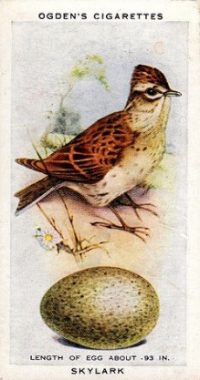
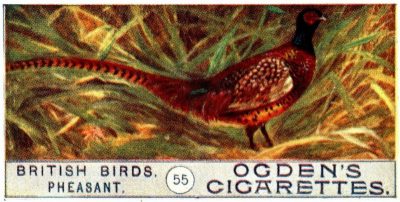
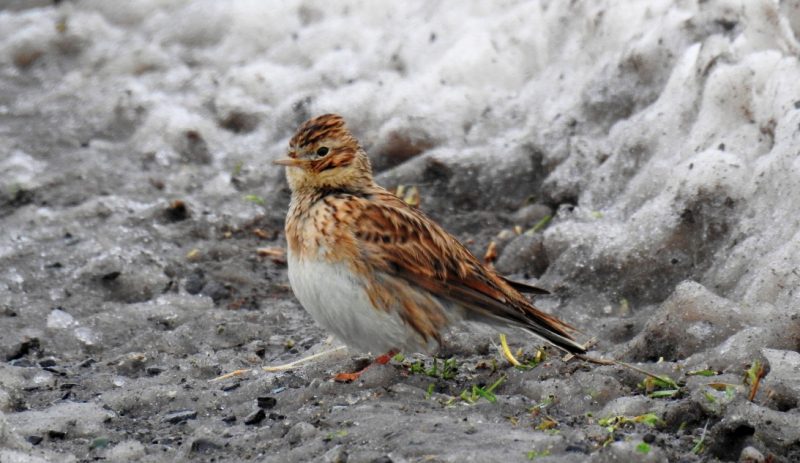

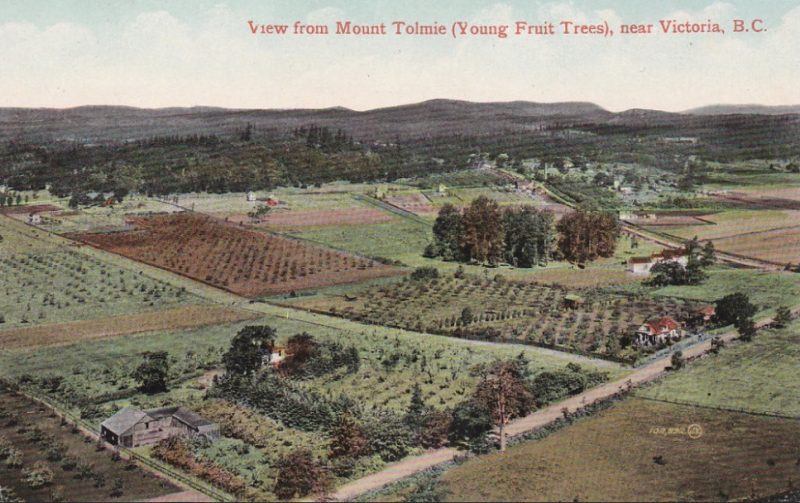



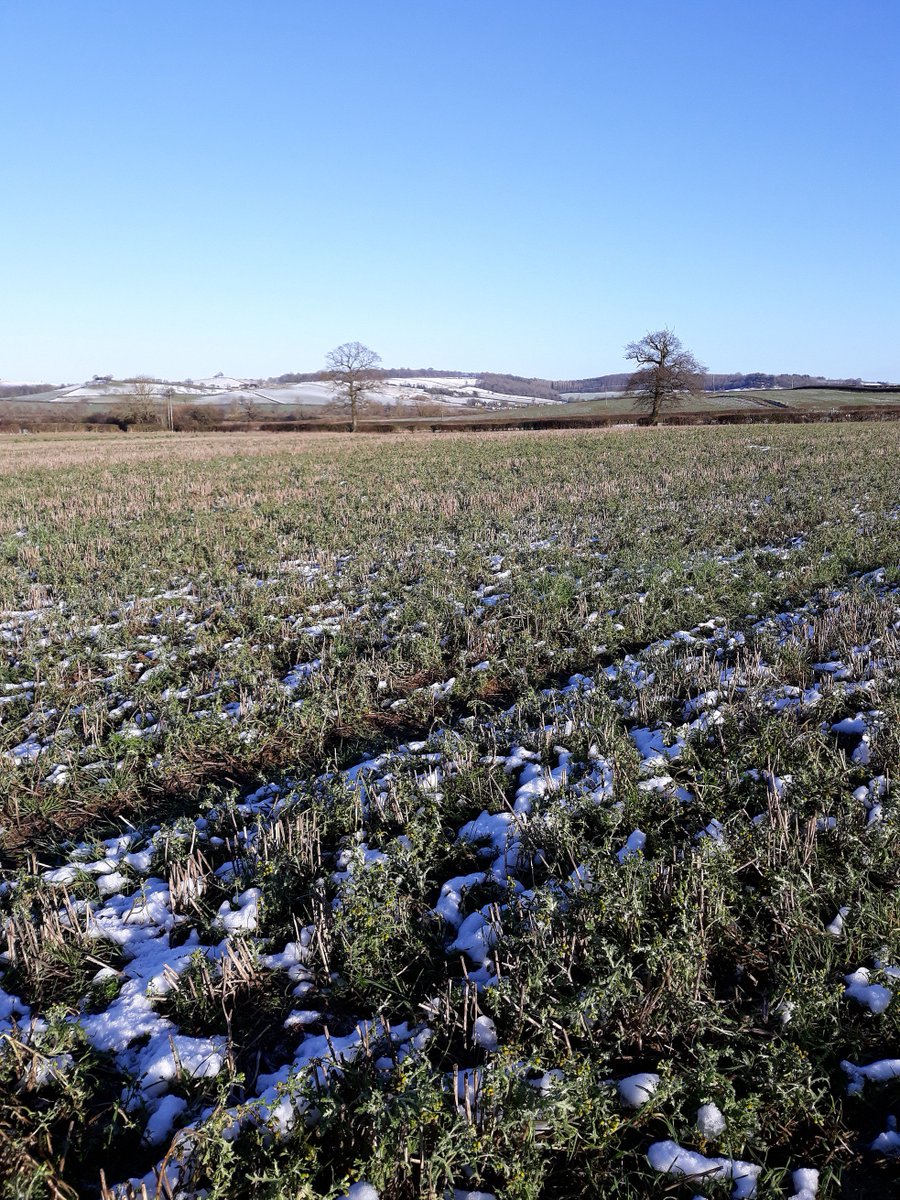
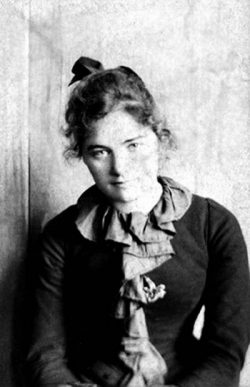
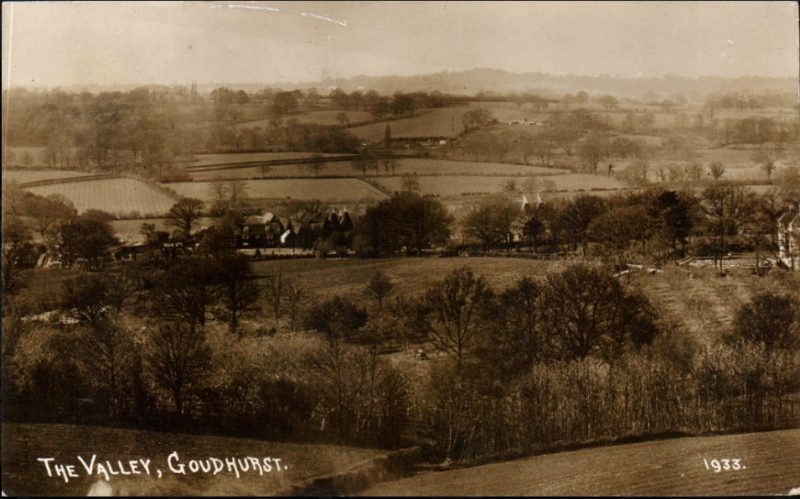
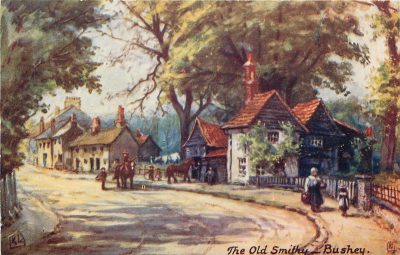
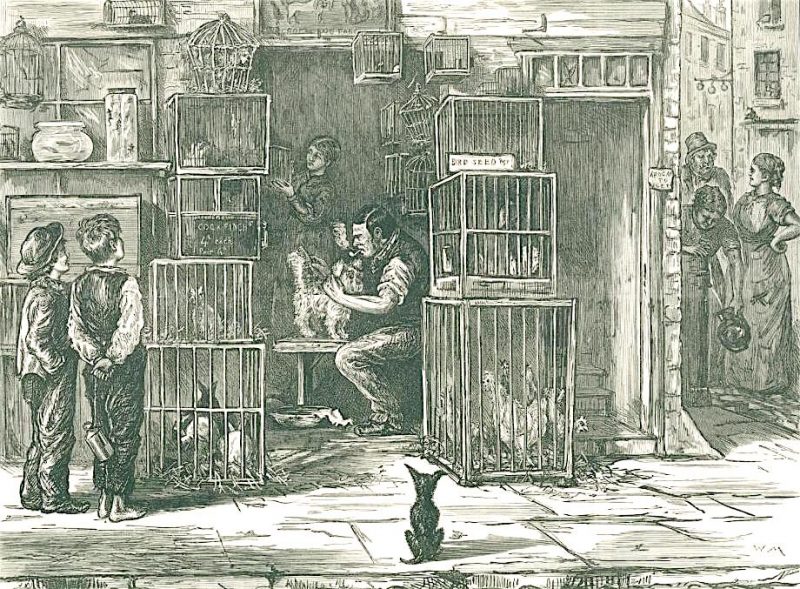
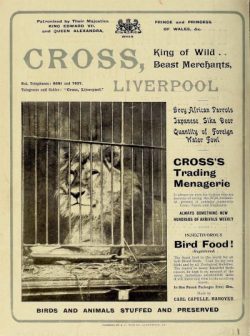

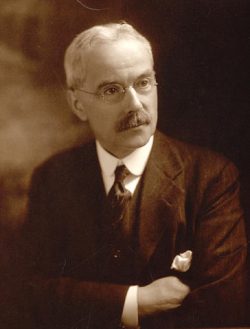
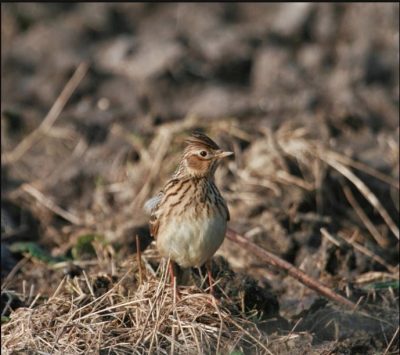
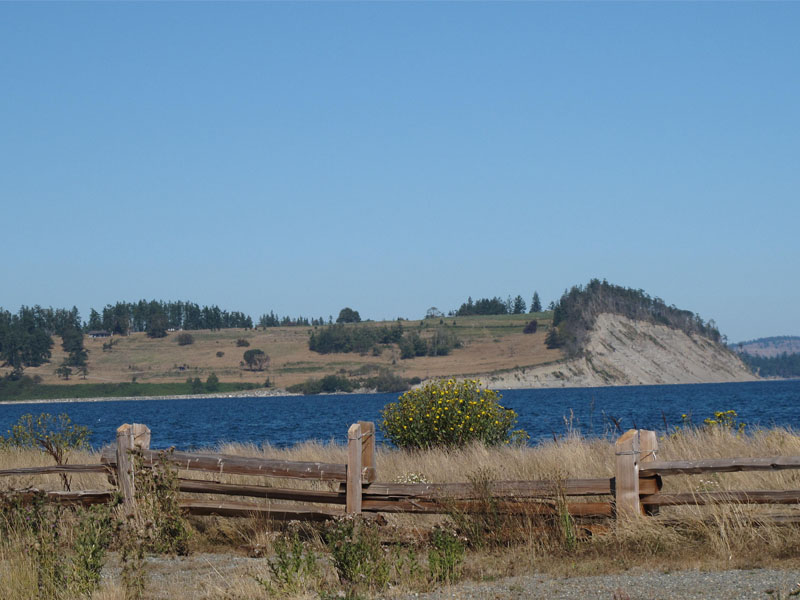
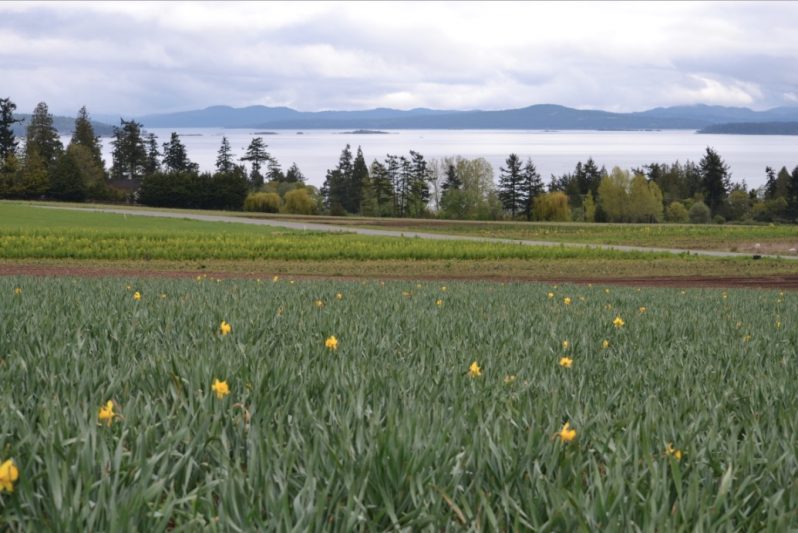
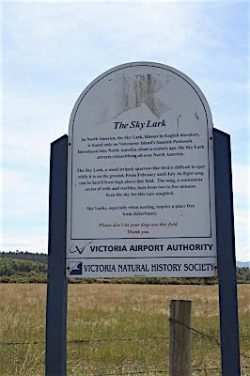




Leave a Reply